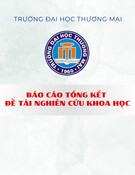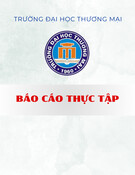
Original
article
Preliminary
study
of
the
monoterpene
response
of
three
pines
to
Ophiostoma
clavigerum
(Ascomycetes :
Ophiostomatales)
and
two
chemical
elicitors
F
Lieutier
AA
Berryman
JA
Millstein
1
INRA,
Ardon
45160
Olivet,
France;
2
Washington
State
University,
Department
of
Entomology,
Pullman,
WA
99164,
USA
(Received
3
August
1990;
accepted
15
March
1991)
Summary —
The
monoterpene
response
of
phloem
and
sapwood
of
individual
pines
belonging
to
3
species
(Pinus
contorta,
Pinus
ponderosa
and
Pinus
monticola)
to
inoculation
with
Ophiostoma
cla-
vigerum
and
injection
with
chitosan,
a
proteinase
inhibitor-inducing
factor
and
a
control
buffer,
was
investigated
quantitatively
and
qualitatively.
The
total
quantity
of
monoterpene
in
the
reactive
tissues
increased
with
each
treatment
but
to
different
levels.
In
each
tree,
the
monoterpene
composition
of
the
reactive
tissues
differed
from
that
of
the
unwounded
tissues,
but
was
the
same
whatever
the
treatment,
even
in
the
case
of
an
injection
with
buffer
control.
In
addition,
phloem
and
sapwood
re-
sponses
were
qualitatively
identical
although
constitutive
compositions
differed
greatly.
The
compo-
sition of
reactive
tissues
was
not
very
different
from
that
of
unwounded
sapwood.
The
direction
of
variation
of
each
monoterpene
from
unwounded
to
reactive
tissues
differed
according
to
the
particu-
lar
tree.
Only
phellandrene
+
limonene
reacted
consistently.
From
these
results
we
cannot
conclude
that
chitosan
is
a
natural
elicitor,
and
the
non-specificity
of
the
response
for
the
aggression
favors
the
hypothesis
that
an
elicitor
originates
from
the
tree
itself.
Because
of
this
non-specificity,
and
the
fact
that
the
three
trees
responded
in
a
qualitatively
different
manner,
we
suggest
that
the
qualitative
monoterpene
response
of
the
tree
is
not
adapted
to
any
specific
aggressor
even
though
these
trees
are
usually
hosts
of
the
same
bark
beetle-fungus
complex.
Thus,
the
role
of
monoterpenes
in
the
in-
duced
defensive
response
is
very
likely
a
quantitative
and
dose-dependent
relationship.
monoterpenes
/
Pinus
contorta
/
Pinus
ponderosa
/
Pinus
monticola
/
Ophiostoma
clavige-
rum
/
chemical
elicitors
/
defense
reaction
/
gas
chromatography
Résumé —
Étude
préliminaire
de
la
réponse
monoterpénique
de
trois
pins
à
Ophiostoma
cla-
vigerum
(Ascomycètes :
Ophiostomatales)
et
à
deux
éliciteurs
chimiques.
La
réponse
mono-
terpénique
du
phloème
et
de
l’aubier
de
3
arbres
appartenant
aux
espèces
Pinus
contorta,
Pinus
ponderosa
et
Pinus
monticola
a
été
étudiée
d’un
point
de
vue
quantitatif
et
qualitatif,
après
des
ino-
culations
du
champignon
O
clavigerum
et
des
injections
de
chitosane,
d’un
facteur
induisant
une
inhibition
de
protéinase
(PIIF)
et
d’une
solution
tampon
témoin.
La
quantité
totale
de
monoterpènes
(hydrocarbures)
mesurée
après
3,
7
ou
14 j
dans
les
tissus
réactionnels
augmente
après
chaque
traitement,
mais
atteint
des
niveaux
différents,
le
plus
élevé
étant
obtenu
après
inoculations
du
champignon.
Dans
le
cas
du
chitosane,
la
réponse
est
quantitativement
proche
de
celle
dirigée
contre
O
clavigerum
chez
P
ponderosa,
mais
ne
diffère
pas
de
celle
dirigée
contre
le
PIIF
et
la
solu-
tion
tampon
chez
les
2
autres
arbres
(tableau
I).
Dans
chaque
arbre,
la
composition
monoterpénique
des
tissus
réactionnels
diffère
de
celle
des
tissus
non
altérés,
mais
s’avère
semblable
quel
que
soit

le
traitement,
même
avec
les
inoculations
de
tampon
témoin
(tableau
II et
fig
1).
De
plus,
les
réponses
du
phloème
et
de
l’aubier
sont
qualitativement
identiques,
bien
que
leur
composition
initiale
soit
très
différente.
La
composition
des
tissus
réactionnels
n’est
en
outre
pas
très
différente
de
celle
de
l’aubier
inaltéré
(fig
1).
Le
sens
de
variation
de
chaque
monoterpène
entre
le
tissu
inaltéré
et
le
tissu
réaction-
nel
varie
selon
l’arbre
considéré;
seul
le
groupe
phéllandrène
+
limonène
réagit
toujours
dans
le
même
sens
(fig
2).
Il
n’est
pas
possible
de
conclure
de
ces
résultats
que
le
chitosane
est
un
éliciteur
naturel,
et
la
non-
spécificité
de
la
réponse
vis-à-vis
de
l’agresseur
est
en
faveur
d’une
hypothèse
qui
situerait
dans
l’arbre
lui-même
l’origine
de
l’éliciteur.
À
cause
de
la
non-spécificité
de
la
réponse
et
du
fait
que
les
3
arbres
réagissent
différemment
d’un
point
de
vue
qualitatif,
il
est
suggéré
que
la
réponse
monoterpé-
nique
qualitative
d’un
arbre
n’est
pas
adaptée
à
un
agresseur
particulier,
bien
que
ces
arbres
soient
des
hôtes
habituels
du
même
couple
scolytide-champignon.
Ainsi,
le
rôle
des
monoterpènes
dans
la
réaction
de
défense
induite
est
très
probablement
de
nature
quantitative
et
dépendrait
de
la
dose
ac-
cumulée.
monoterpène
/
Pinus
contorta
/
Pinus
ponderosa
/
Pinus
monticola
/ Ophiostoma
clavigerum
/
éliciteur
chimique
/
réaction
de
défense
/
chromatographie
en
phase
gazeuse
INTRODUCTION
The
fungus
Ophiostoma
clavigerum
(Robinson-Jeffrey
and
Davidson)
Upad-
hyay
plays
a
decisive
role
in
the
mecha-
nisms
of
establishment
of
the
bark
beetle
Dendroctonus
ponderosae
Hopk
in
North
American
pines,
particularly
Pinus
contorta
var
latifolia
Engelmann,
Pinus
ponderosa
Lawson
and
Pinus
monticola
Douglas
(Reid et
al,
1967;
Safranyik
et
al,
1975;
Shrimpton,
1978;
Raffa
and
Berryman,
1983).
During
bark
beetle
attacks,
this
fun-
gus
stimulates
host
parenchymal
cells
to
produce
resin
which
impregnates
the
tis-
sues
located
around
the
site
of
attack
(Reid
et al,
1967;
Berryman,
1969;
Lieutier
and
Berryman,
1988).
This
induced
reac-
tion
is
the
main
line
of
tree
defense
against
the
attack
of
the
bark
beetle
and
its
associated
fungus.
However,
the
nature
and
the
origin
of
the
chemical
elicitor
re-
sponsible
for
the
stimulation
of
the
paren-
chyma
cells
is
not
clear.
In
a
previous
paper,
we
reported
the
histological
changes
induced
in
the
reac-
tive
tissues
of
these
3
pine
species
by
arti-
ficial
inoculations
of
O
clavigerum
and
in-
jections
of
2
chemical
elicitors,
chitosan
and
a
proteinase
inhibitor-inducing
factor
(PIIF)
(Lieutier
and
Berryman,
1988).
Here
we
demonstrate
both
qualitative
and
quan-
titative
changes
in
monoterpenes
induced
in
the
same
tissues
by
the
same
inocula-
tions
and
injections.
Note
that
chitosan
is
a
mixture
of
β-(1,4)
glucosamine
polymers
which
are
constituents
of
arthropod
integu-
ments
and
of
most
fungal
cell
walls
(Had-
wiger
and
Beckman,
1980).
PIIF
is
com-
posed
of
pectic
oligomeric
fragments
derived
from
plant
cell
walls,
the
most
ac-
tive
being
α-(1,4)
galacturonic
acid
poly-
mers
and
oligomers
(Ryan
et
al,
1985).
Both
chitosan
and
PIIF
are
possible
elici-
tors
of
induced
responses
in
plants
natural-
ly
attacked
by
insects
and
fungi
(Hadwiger
et
al,
1981;
Walkers-Simons
et
al,
1984;
Green
and
Ryan,
1972).
Quantitative
and
qualitative
monoter-
pene
modifications
in
response
to
the
at-
tack
of
bark
beetles
and
associated
fungi
have
been
reported
in
conifers
by
several
authors.
Shrimpton
(1973),
Raffa
and
Ber-
ryman
(1982a),
Schuck
(1982)
and
De-
lorme
and
Lieutier
(1990)
noted
an
in-
crease
of
the
total
monoterpene
content
of
phloem
and
sapwood
in
the
induced
reac-
tions
of
P
contorta,
Abies
grandis
(Lindley),

Picea
abies
Karst
and
Pinus
sylvestris
L,
respectively.
Miller
et al
(1986)
reported
a
greater
increase
in
the
total
monoterpene
content
of
Lodgepole
pine
phloem
in
re-
sponse
to
chitosan
than
to
either
PIIF
or
O
clavigerum.
Qualitative
changes
in
the
monoterpene
fraction
of
the
phloem
were
observed
by
Russel
and
Berryman
(1976)
and
Raffa
and
Berryman
(1982a)
in
A
grandis,
by
Raffa
and
Berryman
(1982b)
in
P contorta,
by
Cook
and
Hain
(1985)
in
Pi-
nus
taeda
L
and
by
Delorme
and
Lieutier
(1990)
in
P
sylvestris.
In
the
last
2
cases,
the
qualitative
changes
were
the
same
for
a
given
tree
for
all
treatments
(ie,
2
differ-
ent
strains
of
the
same
fungus
in
P
taeda,
3
different
fungus
species
and
1
beetle
in
P
sylvestris).
Shrimpton
(1973)
was
unable
to
observe
any
qualitative
changes
in
P
contorta
sapwood,
with
the
exception
of
β-
phellandrene
after
natural
attacks
by
D
ponderosae.
However,
Schuck
(1982)
re-
ported
changes
in
some
monoterpene
components
of
P
abies
sapwood
after
wounding.
MATERIALS
AND
METHODS
The
experimental
devices
and
techniques
were
previously
described
by
Lieutier
and
Berryman
(1988).
One
specimen
of
each
tree
species
(P
contorta,
P
ponderosa,
P
monticola,
=
30
cm
diameter
breast
height
from
an
even-aged
mixed
conifer
stand)
received
a
total
of
12
inocu-
lations
(4
treatments
replicated
thrice)
in
July
1985
at
breast
height
using
the
cork-borer
tech-
nique
(Wright,
1933;
Wong
and
Berrryman,
1977).
The
first
treatment
was
inoculation
with
O
clavigerum,
the
second
with
chitosan,
and
the
third
with
PIIF.
Fungal
cultures
were
10-15
d
old.
The
chemical
solutions
consisted
of
a
ni-
trous
acid
cleaved
crab
shell
chitosan
and
a
raw
PIIF
extract
from
tomato
plants
dissolved
in
0.05
M
sterile
phosphate
buffer
(pH
7)
at
the
rate
of
1
mg/ml.
The
fourth
treatment
was
an
injection
of
the
sterile
buffer
alone.
All
inoculations
consist-
ed
of
100
μl
of
chemical
solution
or
a
5-mm
plug
of
agar
containing
fungal
mycelia.
On
each
sam-
pling
occasion
(3,
7
and
14
d
after
treatments),
one
sample
of
each
treatment
was
taken
on
each
tree.
Reactive
phloem
(with
cambium)
and
sapwood
were
removed
and
cut
longitudinally
in
half.
One
half
was
immersed
in
a
cupric
acetate
solution
for
histological
observations
(Lieutier
and
Berryman,
1988)
and
the other
was
immedi-
atly
placed
on
dry-ice
and
stored
at
-60
°C.
Two
wk
after
treatment,
samples
of
unwounded
phloem
and
sapwood
were
also
collected
and
stored
in
the
same
manner.
Monoterpene
analyses
were
performed
on
samples
collected
after
3
and
14
d.
Samples
col-
lected
14
d
after
treatment
were
divided
into
3
20-mm
pieces,
starting
at
the
point
of
inocula-
tion
and
working
away
from
the
wound,
giving
sub-samples
at
0-20
mm,
20-40
mm,
and
40-
60
mm
Three-d-old
samples
consisted
of
a
sin-
gle
0-20
mm
piece.
Each
phloem
sub-sample
was
finely
chopped
and
then
shaken
in
10
ml
pentane
for
24
h.
The
extracts
were
filtered
by
flash
chromatography
in
silica-gel
G
which
was
rinsed
thrice
in
pentane.
They
were
concentrat-
ed
under
a
stream
of
nitrogen
to
0.5,
1
or
2
ml
according
to
the
richness
in
total
monoterpenes.
Analyses
were
performed
on
a
Perkin-Elmer
Sigma-3
gas
chromatograph
equipped
with
a
flame
ionization
detector
and
a
30
m
x
0.2
mm
capillary
column
(Supelco
SE-30).
The
carrier
gas
was
helium
at 1.1
ml/min
at 18
psi.
The
col-
umn
temperature
program
was
80
°C
for
14
min,
a
rise
of
20°
per
min
to
100
°C,
then
100
°C
for
40
min.
The
injector
and
detector
temperatures
were
constant
at
250
°C.
Three
replicates
were
performed
for
each
sub-sample.
Peaks
were
identified
by
comparison
with
the
retention
times
of
pure
monoterpenes
added
to
the
samples
and
by
enhancement
after
these
additions.
For
P
contorta,
comparisons
were
also
made
with
mass
spectrography
results
from
Raffa
and
Ber-
ryman
(1982b).
The
quantitative
values
were
de-
termined
by
means
of
an
electronic
digital
inte-
grator
using
p-cymene
as
an
internal
standard
(this
terpene
was
found
to
be
lacking
in
prelimi-
nary
chromatograms).
The
monoterpene
compositions
of
the
sam-
ples
were
compared
by
principal
component
analysis
(PCA),
for
each
tree
separately,
and
considering
only
monoterpenes
which
were
present
at
levels of
0.5%
or
greater
in
each
sam-
ple.
This
analysis
was
carried
out
with
SAS
soft-
ware
(SAS
Institute).
In
the
present
study,
each
tree
species
was
represented
by
only
one
individual.
However,
our
aim
was
not
to
define the
qualitative
re-

sponse
of
these
species
but
rather
to
compare
the
terpene
composition
of
responding
tissues
with
that
of
unwounded
tissues
of
the
same
tree.
Although
there
is
a
great
deal
of
variation
in
the
monoterpene
composition
of
conifer
spe-
cies
(see,
for
example,
Cates
and
Alexander,
1982),
variations
between
species
are
much
greater
to
the
extent
that
they
can
be
used
as
taxonomic
characteristics
(Zavarin
et al,
1977).
Our
study
was
designed
to
examine
the
ex-
tremes
of
variability
in
the
defensive
reaction
to
a
pathogen
and
2
elicitors.
RESULTS
As
the
extracts
were
filtered
on
silica
gel,
oxygenated
compounds
were
probably
lost
from
the
samples.
Thus,
in
the
follow-
ing,
the
word
"total
monoterpene"
refers
only
to
hydrocarbides
which
in
fact
corre-
spond
to
most
of
the
monoterpene
com-
pounds.
Concentrations
of
total
monoterpenes
(hydrocarbides)
in
the
different
phloem
and
sapwood
samples
are
presented
in
ta-
ble
I.
As
we
have
only
1
tree
per
species,
between-tree
comparison
of
absolute
val-
ues
is
not
possible.
We
therefore
compare
values
between
treatments
within
trees.
O clavigerum
generally
induced
a
higher
accumulation
of
monoterpenes
than
the
chemical
treatments.
In
P
ponderosa
how-
ever,
the
quantitative
response
to
chitosan
was
often
close
to
the
response
to
the
fun-
gus.
The
terpene
accumulations
induced
by
PIIF
and
buffer
alone
were
always
less
than
that
induced
by
the
fungus.
They
were
also
less
than
that
induced
by
chito-
san
in
P
ponderosa
(phloem
and
sap-
wood,
14
d
after
injury)
and
in
the
phloem
of
P
monticola.
Seventeen
different
peaks
(not
always
present)
were
obtained
by
gas
chromato-
graphy
when
reactions
were
compared
with
unwounded
tissue.
One
peak
was
heptane,
12
were
monoterpenes,
and
4
(probably
monoterpenes)
unidentified
peaks
were
labelled
T1
to
T4.
β-
phellandrene
and
limonene
made
up
a
sin-
gle
peak,
but
P
contorta
contains
mainly
β-
phellandrene
(Raffa
and
Berryman,
1982b;
Smith,
1983)
and
P ponderosa
mainly
lim-
onene
(Smith,
1966).
As
an
example,
table
II
gives
the
monoterpene
percentages
for
the
response
of
the
trees
to
fungus
after
14
d
in
comparison
with
unwounded
tis-
sues.
In
this
table,
some
major
differences
can
be
noticed
between
reactive
and
un-
wounded
tissue.
Figure
1
allows
a
general
qualitative
comparison
between
treat-
ments,
dates,
tissues,
and
distance
from
the
inoculation
point
for
each
tree.
The
first
axis
of
the
PCA
(fig
1)
ex-
plained
58.6,
72.5
and
55.6%,
the
second
axis
20.8,
13.1
and
21.8%
and
the
third
axis
7.2, 6.9
and
9.9%
of
the
variability,
re-
spectively
in
P
contorta,
P
ponderosa
and
P
monticola.
The
first
axis
compared
un-
wounded
phloem
to
reactive
tissues
and
can
be
called
the
reaction
axis.
In
P
pon-
derosa
and
P
monticola,
the
second
axis,
with
the
first,
separated
unwounded
sap-
wood
from
reactive
tissues.
In
P
contorta,
unwounded
sapwood
was
separated
from
reactive
tissues
by
the
third
axis.
Thus,
3
main
types
of
monoterpene
composition
were
identified:
unwounded
phloem,
un-
wounded
sapwood,
reactive
tissues
(phloem
and
sapwood
together)
(fig
1;
ta-
ble
II).
In
all
trees
and
in
all
3
axes,
reactive
phloem
could
not
be
separated
from
reac-
tive
sapwood.
In
addition,
the
composition
of
reactive tissue
did
not
appear
very
dif-
ferent
from
that
of
unwounded
sapwood,
with
only
small
differences
occurring
in
the
concentration
of
some
monoterpenes
(ta-
ble
II).
The
changes
in
phloem
composition
induced
by
treatments
are
summarized
in
figure
2,
the
response
to
fungus
inocula-
tion
after
14
d
being
chosen
as
being
re-
presentative
of
all
treatments
(cf,
fig 1).
Monoterpene
fractions changed
differently







![Báo cáo seminar chuyên ngành Công nghệ hóa học và thực phẩm [Mới nhất]](https://cdn.tailieu.vn/images/document/thumbnail/2025/20250711/hienkelvinzoi@gmail.com/135x160/47051752458701.jpg)









